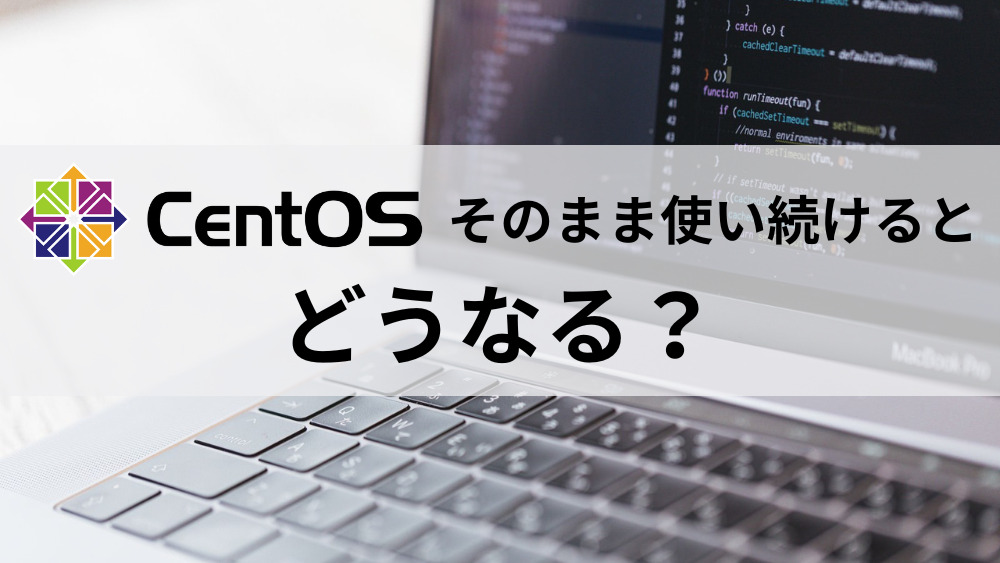Explaining the impact on users due to the end of support for CentOS Linux!

table of contents
Hello! This is Narita from the marketing department!
CentOS Linux has been used by many users and businesses for many years. However, support will end on June 30, 2024, so using it after that has become a big issue!
In this article, we explain the impact of the end of support for CentOS Linux, so please read until the end!
What is CentOS Linux?
CentOS Linux (Community ENTerprise Operating System) is one of the Linux distributions released by CentOS Project
Linux distributions are broadly divided into two types: RedHat and Debian, and CentOS Linux is classified as one of the two, RedHat.
Other famous Linux distributions such as RedHat include:
・Red Hat Enterprise Linux (paid)
・Fedora
・AlmaLinux
・Rocky Linux
There is.
Features of CentOS Linux
CentOS Linux is characterized by high compatibility with RHEL (Red Hat Enterprise Linux). This is because it is provided based on the publicly available source code of RHEL, with parts related to trademarks and licenses removed.
It is also used in many servers and network devices, and as it is open source software (OSS), it can be used for free.
Support for CentOS Linux will end at EOL of CentOS Linux 7 on June 30, 2024. What's behind the end of support?
Background to the end of support
Until now, CentOS Linux has been a clone OS of RHEL, and has played the role of a generic RHEL that has fixed bugs that occurred in RHEL.
Because CentOS Linux has been operating in this position for a long time, it has continued to be used by more people than other Linux distributions.
However, with the end of support for CentOS Linux, it was announced that its successor, CentOS Stream, would be used as a development stage for RHEL, rather than the traditional position of CentOS Linux. As a result, it is no longer possible to maintain the stability that CentOS Linux had until now.
attention has been focused on other Linux distributions such as AlmaLinux and Rocky Linux, which are in the same position as the traditional CentOS Linux
What is the impact of CentOS Linux support end?

The end of support for CentOS Linux has various implications.
The most immediate impact is that CentOS Linux 7 will no longer receive new security patches or updates due to end of support.
This means that even if new vulnerabilities, bugs, or other problems are discovered, they are not addressed. As a result, the risk of system and data leakage increases.
Additionally, the introduction of new features and technologies is expected to be constrained by CentOS Linux's lack of support.
This change will have a particularly large impact on organizations and businesses, not individuals.
Companies and organizations with a lot of confidential information cannot guarantee the security that they had before the end of CentOS Linux support, increasing the risk of their business partner information being leaked. As a result, there is a risk of losing trust from business partners and leading to a deterioration in business performance.
Planning and taking measures to avoid these impacts is a major challenge for CentOS Linux users.
How to deal with security risks
In order to minimize the security risks associated with the end of support for CentOS Linux, it is important to practice the following techniques.
● Adoption of alternative distributions
Once support for CentOS Linux ends, customers are encouraged to consider and migrate to alternative distributions such as AlmaLinux and Rocky Linux.
These two distributions are attracting attention as a migration destination from CentOS Linux because, like the traditional CentOS Linux, these Linux OSs are free to use and compatible with RHEL.
Additionally, we continue to provide security updates and patches, ensuring safe operation. If you are considering migration, you may also want to check out our CentOS server migration solutions
● Use of external services
If you would like to further consider where you want to migrate CentOS Linux, or if you wish to continue using CentOS Linux because you have not yet examined the risks associated with migration, please use the external extended support service for CentOS Linux. There is also an option.
Although it requires a fee, security risks can be reduced by providing security patches for vulnerabilities and receiving technical support.
summary
There's still time until the end of support for CentOS Linux, but if you put off issues that need to be addressed eventually, you may run into unexpected problems.
Are you planning to migrate to another Linux distribution at this stage?
Or will I continue to use it as is?
It is important to think about what method is best and implement it!
Leave your migration from CentOS to Beyond!
Beyond 's "CentOS Server Migration Solution" provides all-in-one technical support for cloud/server deployment, design, construction, migration, and 24/7 operational maintenance and monitoring using Linux distributions such as AlmaLinux OS.・We provide full support to our customers.
Our experts, who have specialized knowledge and technology regarding cloud/servers, will minimize the downtime of your web services and systems and provide you with the benefits of reducing operating costs. (For details, see this link )
If you are interested, please contact us using the inquiry form
Thank you for watching till the end!

 6
6







